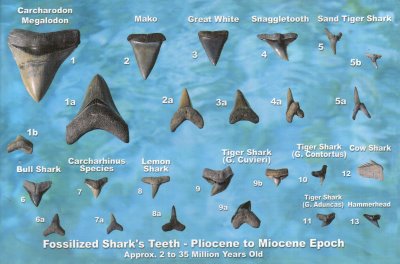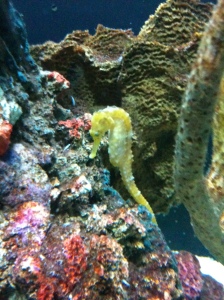Are you ready to sink your teeth into Shark Week 2012? Here are 20 facts about shark teeth to get you started. Discovery Channel’s annual event looks like it will quite the extravaganza for its 25th year. Andy Samberg from Saturday Night Live has been brought in as the official ‘chief shark officer‘. I have my reservations about the summer ritual now as a marine conservationist (Read this article I resonated with last year “Should Shark Week Focus On Conservation?” from Care2.org), but love that it’s an event that brings people together and creates an interest in the marine ecosystem. I have many fond memories of my brothers, parents, and I slowing down at the end of summer to watch sharks in a way we never could from the shoreline.
1. Shark teeth are not attached to gums on a root like our teeth.
2. Sharks typically lose at least one tooth per week.
3. Sharks lose their teeth because they may become stuck in prey or broken and forced out.
4. Shark teeth are arranged in neat conveyor belt rows and can be replaced within a day of losing one.
5. Sharks average out to 15 rows of teeth in each jaw. Although most have 5 and then there is the bull shark that has 50 rows of teeth.
6. Shark teeth are popularly found as beach treasures because sharks shed 1000s of teeth in a lifetime. Although, don’t get yourself in trouble if you decide to collect them. Recently, over 2,400 shark teeth were confiscated from a passenger in India (shark teeth are an illegal import prohibited under the Wild Life Protection Act of 1972).
7. Well after a shark dies and its body decomposes its teeth will fossilize.
8. Fossilized shark teeth are not white because they are usually covered with sediment (which prevents oxygen and bacteria from getting to them).
9. It takes about 10,000 years for a shark tooth to fossilize. The most commonly found shark teeth fossils are from 65,000 year ago (the Cenozoic era).
10. Venice, FL (on the Gulf of Mexico) calls itself the “shark tooth capital of the world”.
11. Sharks are born with complete sets of teeth and swim away from their mother to fend for themselves.
12. A shark’s tooth shape is dependent upon its diet. For instance, the shortfin mako razor like teeth tear flesh, the tiger shark has piercing teeth to cut flesh, and the zebra shark has dense flattened teeth because it feasts upon mollusks.
13. Whale sharks have 3,000 little teeth that are of little use. They’re filter feeders that find food by sifting through their gills.
14. The tooth of the megalodon range from 31/2 – 7 inches long and can weigh more than a pound!
15. Shark teeth were recently discovered to contain fluoride.
16. Sharks do not suffer from cavities.
17. The inside of shark and human teeth contains a soft mineral known as dentin.
18. The coating of shark teeth is acid resistant and less water soluble than our teeth.
19. Shark teeth and human teeth are equally as hard.
20. Even though many sharks have sharp teeth that could inflict a wound to humans, sharks should always be treated with respect.
Image (c) http://www.fancynancypantsinct.blogspot.com















What people are saying …